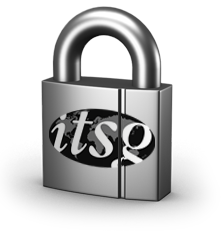Dutch government releases fiscal policy paper
Introduction
In the Netherlands, a new conservative-liberal government presented itself in the fall of 2017. Upon that occasion, the newly formed coalition released its political agreement, essentially a paper setting out its proposed policies for the upcoming - four year - government period. Included in this policy paper were a number of proposed fiscal measures, notably the intention to abolish the levy of Dutch dividend withholding tax.
In the meantime, a new Dutch State Secretary for Finance (responsible for matters of taxation) has taken office. On 23 February 2018, the State Secretary presented his fiscal policy agenda (hereafter: the Agenda) to parliament. In essence, this Agenda describes the contours - and timing - of the various proposed tax measures in more detail, while putting these measures within the broader perspective of international developments as well.
| Overview Dutch Fiscal Policy Agenda | |||
| 2018 | 2019 | 2020 | 2021 |
CIT
· 20% ≤ €200k · 25% > €200k
Dividend withholding tax
| CIT
· 19% ≤ €200k · 24% > €200k
General anti-avoidance rules
· Dedicated office space (at least 24 months) · Payroll >€100k
| CIT
· 17.5% ≤ €200k · 22.5% > €200k
Dividend withholding tax
General anti-avoidance rules
| CIT
· 16% ≤ €200k · 21% > €200k
Withholding tax
|
On the 23rd of February, the State Secretary also sent a separate note to parliament, setting out his approach towards tax evasion and tax avoidance. The fact that this occurred on the very same date is not a coincidence: although his Agenda clearly reflects the government’s ambition to enhance the Dutch fiscal investment climate - and thus to maintain the position of the Netherlands as an attractive jurisdiction for setting up holding companies - the State Secretary also sends out the signal that the Netherlands remains a loyal member state of the European Union (E.U.) and the Organisation for Economic Co-operation and Development (O.E.C.D.).
As such, when designing his tax policies, the State Secretary must also take into account international developments, such as the recent (5 December 2017) publication of the E.U. blacklist for non-cooperative countries, and in particular the contents of the Anti-Tax Avoidance Directive (A.T.A.D.), which must be implemented in the years to come. The A.T.A.D. contains a wide variety of measures, all of which aim to convert ‘soft law’ developed within the framework of the O.E.C.D.’s Base Erosion and Profit Shifting (B.E.P.S.) project into concrete legislation.
The Agenda has no formal legal status: legislative proposals amending the 1969 Corporate Income Tax Act (C.I.T.A.) and the 1965 Dividend Tax Act (D.T.A.) may be expected to be submitted to the Dutch parliament in due course. Since the announced changes are said to occur gradually over the next three years, specific details regarding the proposed measures will become available only as and when the Agenda gets implemented. Nonetheless, it seems clear that the Agenda may already be considered as a ‘blueprint’ for such future legislative proposals.
This article highlights the proposed changes that will affect the Dutch international tax system.
End of the Dutch fiscal unity
The fact that the Agenda was published on the 23rd of February may not be a coincidence, as this was the day after the European Court of Justice (E.C.J.) confirmed the Opinion of the Advocate General in case C-398/16 (X nb). In doing so, essentially the E.C.J. ruled that even though member states may not be required to allow cross-border tax consolidation (and thus set off of losses), taxpayers may still apply certain specific elements of a purely domestic tax consolidation system in relation to their subsidiaries resident in other E.U./E.E.A. member states. Clearly, this opens the door for taxpayers to apply this ‘per element’ approach in many different situations.
Some of the main elements will be removed from the Dutch fiscal unity regime as these were only meant to apply in purely domestic situations. The State Secretary aims to have this ‘reparative’ legislation enacted as a matter of urgency, as previously announced with retroactive effect from the date of publication of the Advocate General’s Conclusion, i.e., 25 October 2017.
However, the State Secretary recognizes that eventually such ‘emergency repair’ measures will need to be followed by an entirely new group relief system that is more robust and future (E.U.) proof. As regards the design (and the moment of introduction) of this definitive solution, further discussions will be held with the Dutch business community, interest groups and scholars, all with a view on preserving a good fiscal business climate.
One way or the other, in the longer run, the Netherlands must probably give up its system of tax consolidation and switch to a - more sustainable - group relief system.
CIT rate reduction
Pursuant to the Agenda, as was already announced in the fall, the Dutch CIT rate will be reduced from the current 25 percent to 21 percent as from 2021. This should bring the statutory rate more in line with the new U.S. federal income tax rate, as well as rates in certain neighbouring countries. However, this reduction will not take place at once, but only gradually, with the applicable rate going down to 24 percent in 2019 and then to 22.5 percent in 2020.
Since the current CIT rate system also contains a lower rate for small profits (up to 200,000 Euro) the Agenda confirms that this step-up rate will also go down gradually, from the present 20 percent to 16 percent as from 2021. In the meantime, the lower rate will go down to 19 percent in 2019 and 17.5 percent in 2020.
With a view on financing these rate cuts, the Agenda mentions that certain limitations (other than those required under the A.T.A.D.) will be introduced as well, with effect from 1 January 2019. Notably, this concerns a restriction of the term for loss carry forward. While at present, losses can still be carried forward for nine years, based on the Agenda, the carry forward of losses will be restricted to six years. The term for carry back will remain one year.
Furthermore, depreciation on real estate will be restricted - if the property is used within the business of the owner, its fiscal book value may not be lower than the fair market value as annually determined for (local) tax purposes.
Withholding tax reform
Back in the fall of 2017, the incoming government coalition announced that it intended to abolish the current Dutch withholding tax on dividend distributions (levied at a statutory rate of 15 percent) with effect from 1 January 2020.
This announcement caused quite some surprise, particularly as the outgoing government coalition (headed by the same prime minister) had just submitted a legislative proposal to parliament based on which the existing dividend tax regime would be reformed with effect from 1 January 2018.
Meanwhile, the latter piece of legislation has indeed been enacted. One of its main features is a significant extension of the scope of the exemption for corporate shareholders. Where a domestic company owns at least 5 percent of the shares of another Dutch company, such shareholder is eligible for application of the Dutch participation exemption on any dividends it receives from its subsidiary. Hence, the latter is not required to withhold dividend tax on such distributions either. As regards corporate shareholders based in another E.U. member state, a similar exemption was introduced upon implementation of the E.U. Parent Subsidiary Directive in the early nineties. Subsequently, the European Court of Justice ruled that the qualifying percentage in intra-E.U./E.E.A. situations may not exceed the 5 percent threshold for exemption which applies in domestic situations.
Until the recently enacted tax reform, this exemption only applied to corporate shareholders based in the Netherlands or another E.U./E.E.A. country. However, this exemption has now been extended to cover any jurisdiction that has concluded a double tax treaty with the Netherlands. Although the relevant treaty must contain a clause governing the taxation of dividends (meaning that an agreement which merely provides for exchange of information does not qualify for exemption), the contents of such clause are not relevant: the new unilateral exemption applies just as well where the treaty contains certain additional criteria for treaty application or provides for a reduction of the statutory withholding rate only.
Thus, even though the recipient of the dividend must be considered tax resident in the other treaty state, whether any applicable ‘limitation on benefits’ (L.O.B.) test (such as the detailed L.O.B. clauses included in the Dutch treaties with Japan and the United States) is met as well is not relevant for application of the Dutch domestic exemption.
Furthermore, under the new rules, the Netherlands unilaterally grants an exemption to corporate shareholders owning a qualifying interest of 5 percent in their Dutch subsidiaries, even if the applicable tax treaty provides for a reduced withholding rate (e.g. 5 or 10 percent). This still applies to a number of Dutch tax treaties, notably those with Canada and China. Even though the treaty between the United States and the Netherlands already provides for zero withholding, this percentage is not applicable in all cases, meaning that previously the reduced 5 percent treaty rate was the fall back scenario. After the recent reform, U.S. corporations can simply rely on the Dutch unilateral exemption when receiving dividends from the Netherlands.
Clearly, the recent introduction of this unilateral exemption has significantly improved the position of the Netherlands as a European ‘hub’ for multinational enterprises headquartered in treaty countries, amongst which are some of the world’s largest economies - and important trade partners - such as Canada, China, Japan and the United States.
Nonetheless, since the new government also wants to increase the attractiveness of the Netherlands as a location for (listed) top holding companies, it has expressed the intention to take the (next) step and thus to abolish dividend tax. This should not just persuade foreign enterprises to migrate their headquarters to the Netherlands, but also preserve the ‘Dutch face’ of multinationals that have their roots in the Netherlands. The recent example of Unilever shows that this strategy already seems to have the desired effect (even though, supposedly, tax reasons did not play a role in its decision).
In any event, pursuant to the Agenda, the abolition of dividend tax is still envisaged, with effect from 1 January 2020. However, as from the same date, a conditional (tailored) withholding tax will be introduced which applies to profit distributions to affiliates resident in a jurisdiction included in the E.U. blacklist of ‘non-cooperative’ countries. Such source tax would also apply to jurisdictions with ‘extremely low’ tax rates, as well as in ‘abusive situations’. At present, both concepts are still to be defined and the applicable withholding tax rate has not yet been determined. It does seem plausible, however, to assume that it will range between the current 15 percent withholding rate and the new - higher – CIT rate of 21 percent.
As a next step, effective from 1 January 2021, this conditional withholding tax on dividends would be extended to cover intercompany interest and royalty payments from Dutch taxpayers to low-tax jurisdictions in abusive situations. Historically, the Netherlands has never applied a withholding tax on outgoing interest and royalty payments, meaning that the mere intention to introduce one is already a break with past practice and principles. However, in light of the increased international pressure on the Netherlands to counter abusive structures whereby a Dutch company (which may lack adequate substance) is used as a conduit (flow-through vehicle) for financial streams ending up in tax havens, the present Dutch government is keen to stay ahead of these discussions and take legislative action. This intention should be put within the context of international developments, notably the B.E.P.S. action plan from the O.E.C.D. and the various initiatives taken at E.U. level.
Again, the proposed withholding tax on interest and royalty payments is conditional and would only apply to intercompany payments to companies which are tax resident in a jurisdiction listed on the E.U. blacklist or a jurisdiction with an extremely low tax rate. The term “jurisdiction with a low tax rate” is yet to be defined. The tax rate of the conditional interest and royalty withholding tax is also yet to be determined but the rate could be reduced under applicable tax treaties or other arrangements.
Last but not least, it seems noteworthy that the - recently introduced - unilateral exemption is subject to the application of domestic anti-abuse rules. Essentially, these domestic rules codify the ‘principle purpose test’ (P.P.T.) as laid down in the new ‘multilateral instrument’ (M.L.I.) which has been developed by the O.E.C.D. within the context of its B.E.P.S. program. Even though the abolition of dividend tax would imply that it will no longer be necessary to rely on any exemption, still the P.P.T. may continue to play a role in determining whether a certain structure may be considered abusive.
Ruling practice and substance requirements
The Netherlands has a long standing tradition of providing taxpayers with certainty in advance on their tax position by granting them rulings upon request. The importance of this practice is still recognised today, as the Agenda stipulates that it improves the fiscal investment climate in the Netherlands, whilst at the same time providing the tax authorities with a useful instrument to determine tax positions in advance.
Nowadays, rulings can either take the form of an Advance Tax Ruling (A.T.R.) or an Advance Pricing Agreement (A.P.A.). The former concerns the tax consequences of a certain structure or transaction, the latter transfer pricing matters.
Both types of rulings can be described as a written compromise on the interpretation of certain legal provisions as they apply to a specific taxpayer within the context of a proposed (set of) arrangement(s). Such agreements are normally concluded on a case-by-case basis. Within the Dutch Revenue Service, a separate department (known as the ‘ruling team’) is responsible for handling requests for an A.T.R. and/or A.P.A. The current A.T.R./A.P.A. practice is laid down in various decrees from the State Secretary for Finance, providing certain technical and administrative guidelines that the tax authorities, as well as taxpayers, must comply with.
Rather than being a prerequisite for obtaining specific tax treatment (essentially deviating from applicable law), rulings should be perceived as confirmation of the views and interpretation of the Dutch tax authorities regarding a specific fact pattern in view of legislation in force and applicable case law. Consequently, rulings should not provide advantageous tax treatment to individual taxpayers. As recent developments have shown, this process is closely monitored by the European Commission, which aims to take away any such (alleged) advantages by applying the E.U. state aid doctrine.
Even though rulings are not publicly disclosed, automatic exchange of information regarding rulings may take place with the respective foreign tax authorities. Within the E.U., the automatic exchange of information between member states on tax rulings has been enhanced through amendment of the directive on administrative cooperation between member states (Directive 2011/16/EU). On this basis, automatic exchange of information regarding rulings may have taken place since 1 January 2016.
Substance requirements
In order to apply for an A.T.R. or an A.P.A., a company must meet certain specific conditions with respect to its substance in the Netherlands and the economic risks that it is exposed to, specifically within the context of an A.P.A. The relevant list of substance requirements was first published in 2004.
At the time, this test only served to qualify for the ruling process. However, even then, it was perceived by tax practitioners as a list of ‘safe harbour’ criteria with a more general application as regards a company’s tax residency in the Netherlands. After all, even though a company incorporated under Dutch law is considered to be resident in the Netherlands for domestic tax purposes, it may well be considered tax resident in another jurisdiction under the application of a bilateral tax treaty. For example, where such company is found to have its place of effective management in that other jurisdiction.
Over the past decade ‘substance’ has increasingly become more relevant in international tax policies. Consequently, international business has become more accustomed to complying with those requirements through verifying whether local substance is and remains adequate.
On their part, by imposing further demands concerning the level of substance that must be retained, the Dutch tax authorities have sought to counter criticism of the Netherlands as a ‘flow-through’ jurisdiction. Dutch based entities performing intra-group financing or licensing activities and seeking to benefit from a tax treaty concluded by the Netherlands or the E.U. Interest and Royalty Directive must now meet minimum substance requirements similar to those that already applied to companies seeking to obtain a tax ruling.
Essentially, this is an ‘upgrade’ of these substance requirements, which are now laid down in specific regulations. If it cannot be confirmed that the minimum substance requirements are met, spontaneous exchange of information with the relevant foreign tax authorities may follow. The purpose of such spontaneous exchange of information with foreign source countries would be to help them assess whether the Dutch based company receiving the interest, royalty, rent or lease payments from their country is the beneficial owner of such payment. They would then be entitled to exemption from local withholding tax or a reduction of the applicable rate under the applicable tax treaty and/or the E.U. Interest and Royalty Directive.
Substance requirements regarding the minimum amount of equity to be retained largely depend upon the specific activities of the company. For instance, a company applying for an A.T.R. confirming the application of the participation exemption may be required to finance a minimum part (e.g. 15%) of its investment in the relevant subsidiary with equity.
As regards group financing and licensing activities, the minimum equity requirement is closely related to article 8c CITA. This anti-conduit rule was introduced in 2001, as a first attempt to discourage activities that lack economic reality. Essentially, article 8c CITA provides that interest and royalty payments from and to related entities are not taken into account for tax purposes (and thus excluded from the fiscal P&L) if the taxpayer is not exposed to genuine risk with regard to the relevant loan or license agreements.
In the Agenda, the need to meet minimum substance requirements is again recognised as the question arises whether providing certainty in advance is preferable in all situations. In this respect, the new State Secretary for Finance has expressed his intention to further expand these requirements. It is envisaged that the substance requirements that have recently been introduced in connection with the codification of the P.P.T. (see section 4 above) must also be satisfied in order to obtain certainty in advance. This would imply that, in order to be eligible for an A.T.R. and/or A.P.A., a company must incur salary expenses amounting to at least €100,000 and have a suitable office space at its disposal for at least 24 months.
Furthermore, the State Secretary has stated that his aim is to expand the situations in which information is exchanged with a source country if the Dutch taxpayer does not meet these (additional) substance requirements. This should be achieved by expanding the group of taxpayers of which information will be exchanged to include international holding companies.
Although the timing is still to be determined, the aim is to introduce these amendments to the substance requirements shortly, and they could enter into force as early as 1 January 2019.
Implementation of the A.T.A.D.
Earnings stripping rule
As anticipated, the Agenda confirms that the earnings stripping rule that is part of the A.T.A.D. package will be implemented in the C.I.T.A. with effect from 1 January 2019. This means that, going forward, net borrowing costs will be deductible only up to 30% of earnings before interest, tax, depreciation and amortization (E.B.I.T.D.A.), with limited possibility to carry forward.
For implementation into Dutch tax legislation, the government has chosen to adopt a threshold (de minimis rule) of 1 million Euro, meaning that small and medium sized businesses should not be affected. However, the earnings stripping rule will have an impact on Dutch entities that are part of a highly leveraged group, as there will be no group-ratio exception in the Netherlands. Furthermore, there will be no grandfathering rule, meaning that as from the date of implementation, the new restriction will apply to existing loans as well.
The good news is that the Agenda includes the intention to abolish certain existing limitations on interest related to the (acquisition) financing of subsidiaries (articles 13l and 15ad CITA). However, the anti-base erosion rule as laid down in article 10a CITA is likely to survive the implementation of the earnings stripping rule in the Netherlands.
C.F.C. rule
As a part of the A.T.A.D. package, with effect from 1 January 2019, member states must also implement some form of Controlled Foreign Corporation (C.F.C.) rule into their tax codes. Under the A.T.A.D., a foreign entity (or branch) is considered a C.F.C. if the taxpayer has an interest exceeding 50 percent in that foreign entity (control test) and the tax due in the foreign jurisdiction is less than 50 percent of the corporate income tax that would have been due if the foreign entity was a domestic taxpayer (low taxed test).
As the Netherlands has always had an exemption system (i.e., applied the principle of capital export neutrality), the Dutch business community, as well as most scholars and practitioners, are somewhat critical about having such an odd C.F.C. rule in the tax code. Therefore, its implementation is being closely monitored. Further discussions with stakeholders will follow and the Agenda reveals how the State Secretary envisages this to be done.
Essentially, the A.T.A.D. allows two methods for determining C.F.C. income. One of these models (B) entails a transfer pricing approach, by adjusting transactions with the C.F.C. on the basis of the arm’s length principle. Since this is embedded in Dutch tax law, according to the State Secretary a change of law would not be strictly necessary to properly implement the A.T.A.D.
Nonetheless, in case a C.F.C. does not carry out genuine economic activities locally and its jurisdiction has a low statutory tax rate or is included in the E.U. blacklist for non-cooperative countries, the State Secretary embraces the alternative model (A). That model is more far stretching, as it entails inclusion of non-distributed earnings resulting from certain categories of income, e.g., interest, royalties, dividends, capital gains and financial leasing.
The Agenda, therefore, confirms that, in principle, a C.F.C. can be considered to carry out genuine economic activities if it meets the additional substance requirements described in section 4 above (meaning that the C.F.C. incurs salary expenses amounting to at least €100,000 and has adequate office space at its disposal for at least 24 months). This approach implies an objective test, to be applied in line with E.U. case law.
Anti-hybrid rule
Finally, the A.T.A.D. demands taking certain measures against hybrid mismatches, which the Netherlands aims to implement with effect from 1 January 2020. Given the wide variety of mismatches and the technical complexity of such legislation, prior public consultation is considered necessary. According to the Agenda, the Netherlands also aims to include anti-hybrid rules in its bilateral tax treaties, either directly or through the application of the Multilateral Instrument (M.L.I.).
Summary
In the coming years, the Dutch fiscal investment climate for multinational companies and investment funds will be further enhanced through the abolition of dividend withholding tax and the reduction of general CIT rates. The recent example of Unilever already demonstrates that this strategy might be fruitful.
Also, despite implementation of C.F.C. rules for abusive structures, exemption of profits derived through foreign branches or subsidiaries will remain a cornerstone of the Dutch tax system.
The Netherlands also continues to embrace international initiatives to address tax avoidance and is currently implementing the A.T.A.D. and introducing closely related legislation. Having a focus on structures and transactions that lack any economic substance, these will be combatted via tailored C.F.C. rules and conditional source taxes.
Finally, now that the E.C.J. has recently decided that taxpayers may apply specific elements of domestic tax consolidation systems to their affiliates resident in other E.U./E.E.A. member states, some of these elements will be removed from the Dutch fiscal unity regime (i.e., also in purely domestic situations). In the longer term, the Netherlands may entirely give up its system of tax consolidation and switch to a more sustainable group relief system.

 Login
Login






















































